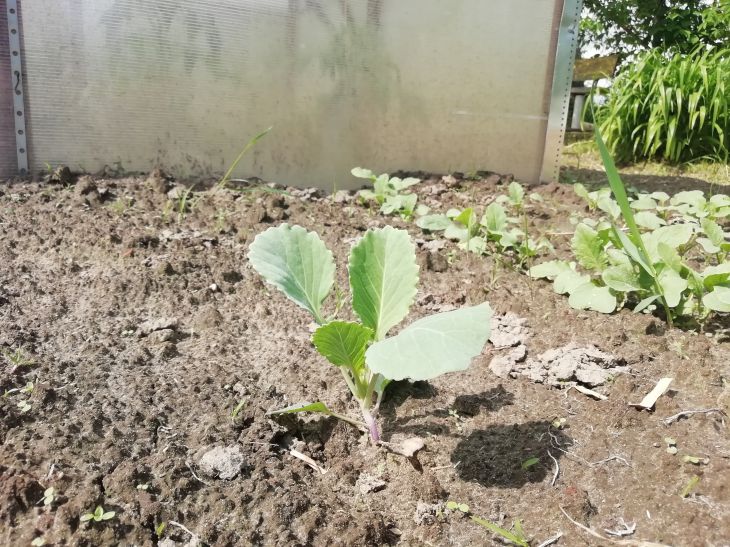Growing Healthy and Strong Cabbage Seedlings: 8 Main Secrets
Cabbage is tasty and healthy, so many gardeners grow it in their plots.
To get a big harvest, you should follow certain rules.
Selecting a variety
The first step is to choose a cabbage variety for growing. Early varieties will not yield a large harvest, because they grow to 1.5 kg and are used in salads.
Also, they cannot be stored for a long time. Mid-season ones are used only during the season, but late-season ones can be stored throughout the winter and are also suitable for pickling.
Preparing the soil
You can't plant cabbage in areas where potatoes and tomatoes used to grow. Such beds may contain larvae of harmful insects and diseases that will harm young shoots.

Therefore, it is better to prepare a grant substrate. Turf soil and leaf humus, after heat treatment in a microwave, oven or water bath, need to be sifted and mixed together in a 1:1 ratio. You can also add ash in a ratio of 10 tbsp. per 10 kg of soil.
Sowing dates
Early cabbage is sown from mid-February to early March. It is transplanted to a permanent growing site at the end of April. Mid-season cabbage should be prepared in the first days of April, and transplanted to the garden from mid-May.
Late varieties of cabbage are sown from the end of May to the beginning of June. These are approximate dates for planting the crop, because you need to pay attention to the region of residence and weather conditions. Usually, the first shoots can be seen ten days after sowing, and 35-50 days after that you can transplant into the ground. You need to prepare the seedlings for planting in the ground 40-60 days in advance.
Lighting
Late winter – early spring is the time to plant seedlings. However, at this time there is not enough natural light for normal growth. Then the sprouts are illuminated with phytolamps. Young seedlings need light for 12-15 hours a day to grow strong and healthy.
Loosening
Cabbage should be watered as needed. However, the soil should not be allowed to dry out or become over-wet. To do this, it should be loosened regularly.
Temperature conditions
Too high and too low temperature has a detrimental effect on seedlings. Therefore, the temperature regime should be 18-20 degrees Celsius. As soon as the first sprouts appear, the temperature should be reduced to 15-17 degrees Celsius during the day and 8-20 degrees at night. In this way, young plants will harden and will not stretch too much.
Fertilizers
It is also important to feed the seedlings. They need nutrients. The first feeding is done 9 days after separating the seedlings into different cups, the second - after 14 days, and the third - a couple of days before transplanting to the site.
It is better to feed with liquid fertilizers, strictly following the manufacturer's instructions.
Disease prevention
After picking, the seedlings need to be treated with trichodeomin and rhizoplan. The first is used against fungus, and the second is used to help the plant absorb iron, so as not to get bacteriosis and rot. Black leg may appear on cabbage sprouts, provided there is an excessive amount of moisture, temperature fluctuations and insufficient air. In this case, urgent control measures must be taken.
The soil should be dried and ash should be sprinkled on top, then thoroughly loosened. The most dangerous for cabbage is the cruciferous flea beetle. To get rid of it, you need to treat the seedlings with Intavir.
